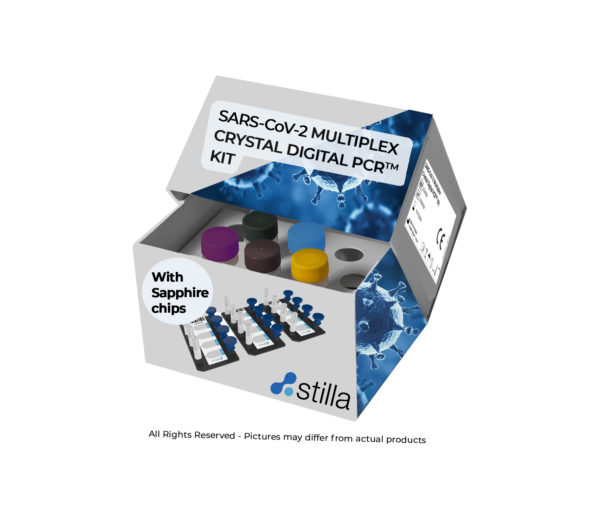New High-Throughput Testing Approach for COVID-19 Combines Digital PCR Technology with Group Testing
By LabMedica International staff writers
Posted on 09 Jun 2020
A new high-throughput and cost-effective testing approach for COVID-19 combines digital PCR technology with the group testing method to significantly reduce costs and increase testing capacity, while offering a diagnostic sensitivity greater than the current standard of individual RT-PCR tests.Posted on 09 Jun 2020
Stilla Technologies (Paris, France) which is offering the new COVID-19 testing approach has also published the largest comparative study to date for group testing of SARS-CoV-2. Given the increasing demand for SARS-CoV-2 real-time reverse transcription polymerase chain reaction (RT-PCR) testing and the scarcity of reagents among testing facilities worldwide, group testing or sample pooling has been proposed as a solution to expand testing capabilities. Moreover, with 99 tests out of 100 expected to yield negative results, group tests are optimal in such a configuration of low positivity rate.

Image: SARS-CoV-2 Multiplex Crystal Digital PCR Kit (Photo courtesy of Stilla Technologies)
In a group test, the samples of 8, 16 or 32 individuals are combined into a pooled sample. This pooled sample is then tested. If the test is negative, it means that all the individuals in the group are negative. If it is positive, it means that at least one individual is a carrier of SARS-CoV-2. It is then necessary to test every sample separately again to identify the carrier (s). With a test positivity rate of 1%, only one in 10 groups will be positive. The test savings are therefore substantial, around 80%. Additionally, this group testing approach multiplies the number of individuals tested for a given amount of reagents by a factor of five.
However, a risk associated with group tests is their sensitivity, which is deemed to be lower for large groups (n> 4). This reduction in sensitivity means that there is an increased risk of not detecting certain carriers of the virus with pooled tests compared to individual tests. Stilla Technologies' Crystal digital PCR technology in association with the group testing method addresses the main problem of sensitivity. The first ever study to evaluate group tests combined with digital PCR by Stilla Technologies systematically compared group tests of SARS-CoV-2 to individual reference tests. Out of 448 samples tested, 26 and 25 tested positive by digital PCR group test, for group sizes of 8 and 16 samples. This compared to 25 tested positive with individual reference tests in RT-PCR.
Thus, the study demonstrates a similar sensitivity to better for group tests by digital PCR, as compared to individual tests by RT-PCR. The new approach of group testing by digital PCR appears to have a diagnostic sensitivity "similar to better" compared to current tests in individual RT-PCR. However, this method makes it possible to reduce the amount of reagent required by up to 80% while reducing costs as well and increasing the capacity of testing by digital PCR up to 10 times.
“We continue our efforts in the fight against COVID-19 and are proud today to present an innovative approach that greatly increases the testing capacity and meets the highest quality standards. This digital PCR-based group testing method has a diagnostic sensitivity superior or equal to the current standard - that is individual RT-PCR testing-for group sizes up to 16 samples. The main benefit of this method is that it reduces the amount of reagent required to test a population by about 80% while reducing costs by as much and increasing test capacities by up to 10 times,” said Rémi Dangla, co-founder and CEO of Stilla Technologies.
Related Links:
Stilla Technologies













